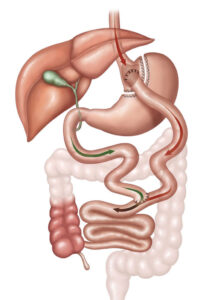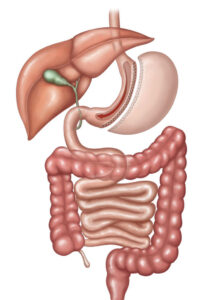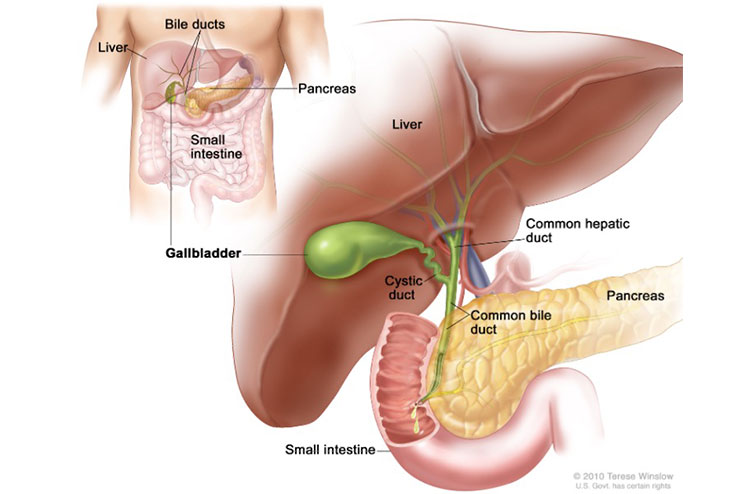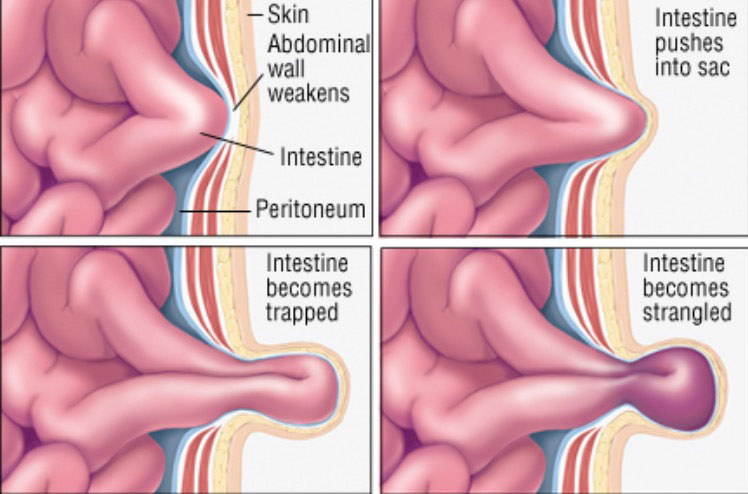Operations
You may be a candidate for weight loss surgery if your BMI is at least 40 or at least 35 and you have had other health problems related to your weight. You have tried for at least six months to lose weight with diet and exercise, but have had little to no success. Dr. James Barnes will provide personal consultation. Learn more about weight loss operations here.
Gastric Bypass

The gastric bypass is the grandfather of all weight-loss operations. It was first performed over 50 years ago, and is still considered the gold standard by most bariatric surgeons. With this operation we create a small stomach pouch, about the size of a large egg, and then bypass the stomach and first part of the intestine. This limits how much food a person can eat at one time, and the food that is eaten is not fully absorbed, so you don’t get as many calories out of a given amount of food. Most patients will lose about 70 percent of their excess weight, and it usually cures most of the associated medical problems such as diabetes and high blood pressure.
Sleeve Gastrectomy

The sleeve gastrectomy is a relatively new operation where we remove about 75 percent of the stomach, leaving a long, narrow stomach tube about the size and shape of a small banana. By downsizing the stomach, people fill up much more quickly, and the appetite is decreased. Patients typically lose over half of their excess weight, becoming much healthier in the process.
Gall Bladder Removal

The gallbladder is a small pouch that sits underneath the right side of the liver. It’s function is to store the bile produced by the liver which aids in digestion of fats. When the gallbladder is not functioning properly usually develops small gallstones which can be easily seen on ultrasound. Common symptoms of gallbladder disease include upper abdominal pain and nausea, especially after eating a meal that is high in fat.
Usually the best treatment for a defective gallbladder is to simply remove it. This is done laparoscopically with 4 tiny incisions. It is usually performed on an outpatient basis and most people are back to work within a few days.
Anti-reflux Surgery

Gastroesophageal reflux disease (or GERD) is a condition where food or stomach acid comes back up into the esophagus from the stomach. A hiatal hernia is an enlarged opening in the diaphragm at the junction between the esophagus and stomach and may worsen reflux symptoms. Common symptoms include heartburn and food or liquid coming up into one’s throat, especially when lying flat at night. Mild to moderate cases can usually be treated with dietary modification and acid blocking medications such as Prilosec. More severe cases may require surgery.
To correct the problem surgically, the hiatal hernia is closed with stitches and the stomach is wrapped around itself to create a one-way valve which blocks the stomach contents from escaping. The operation is done laparoscopically making for a relatively short recovery period.
Hernia Repair

A hernia is a defect or hole in the muscular lining of the abdominal cavity. Common sites include the groin, the belly button, or the site of a previous surgical incision. Usually a bulge can be noted at the site of the hernia and it is frequently painful. If a loop of intestine gets caught in this opening, hernias can become quite dangerous and even life-threatening.
Fortunately most hernias can be repaired before serious complications occur. Many of these procedures are done laparoscopically and frequently involve placing a small piece of mesh in the opening to reinforce the closure.



